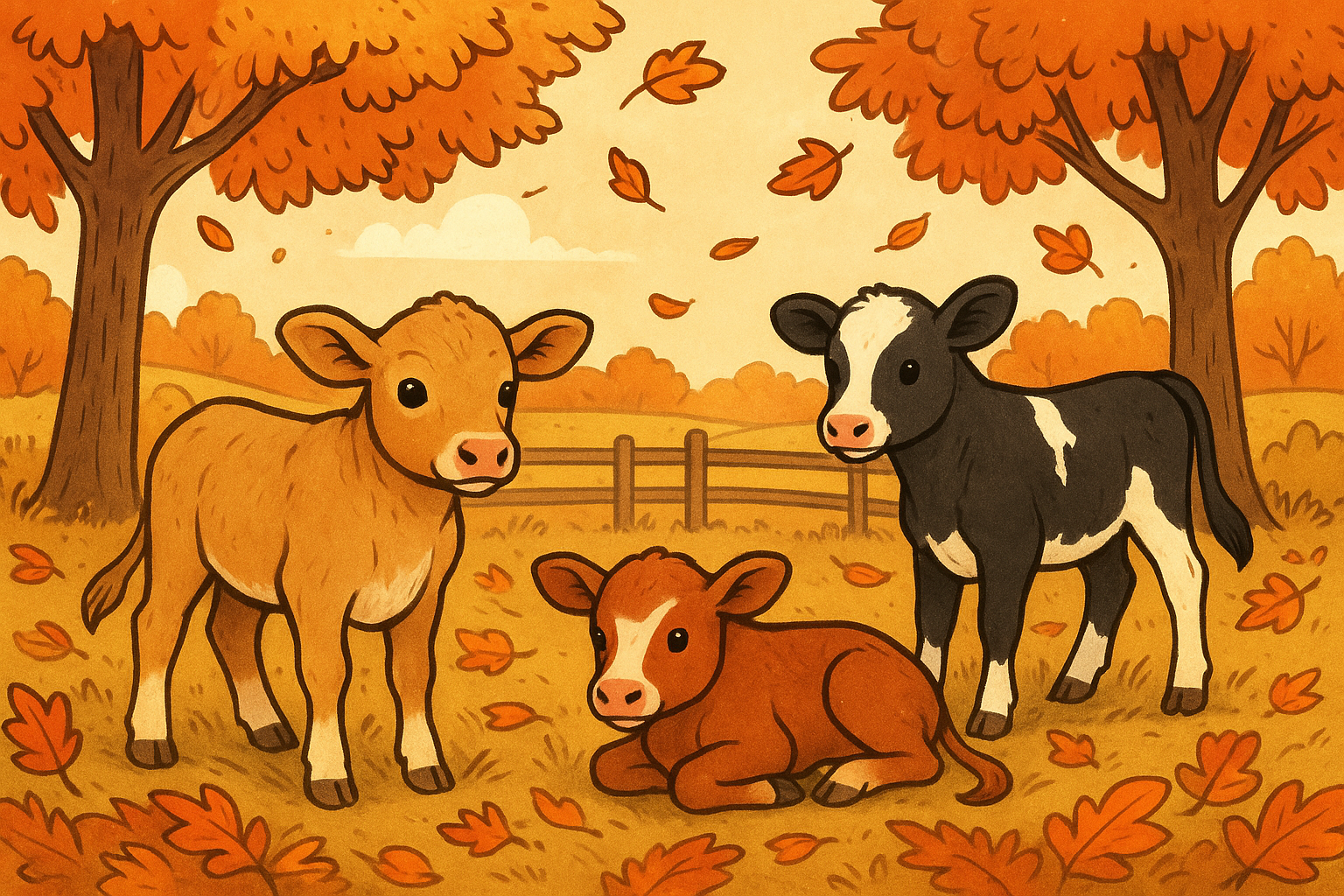The Autumn Challenge for Calf Rearing
After one of the warmest summers on record, Autumn has arrived with wet, chilly weather — creating new challenges for calf rearing. Now is the perfect time to review your rearing strategy and ensure your facilities and routines are ready to support healthy growth through the colder months ahead.
Keeping Calves Comfortable in Cold Weather
Young calves under three weeks old have a lower critical temperature of 10–15°C, meaning they need extra energy to stay warm as temperatures drop.
Managing these environmental changes early helps calves maintain growth rates and avoid stress-related illness.
Practical tips for maintaining the right environment:
-
Keep bedding dry — damp straw encourages disease-causing bacteria.
-
Monitor shed temperatures with affordable digital thermometers placed at calf height.
-
Observe behaviour: huddling or avoiding certain areas can signal drafts or cold spots.
-
Use straw bales strategically to block wind in open-fronted sheds.
-
Consider calf jackets in consistent cold spells, but remove them during warmer periods to prevent sweating.
🌐 Learn more: AHDB Calf Housing Guide
Housing and Hygiene: The Foundation of Healthy Growth
Clean, dry, and well-ventilated sheds are essential, particularly as Autumn brings a surge in newborns. While purpose-built facilities are ideal, simple adaptations can deliver big improvements.
Key housing and hygiene insights:
-
Ensure proper drainage: trapped urine releases ammonia, which damages airways and increases respiratory disease risk.
-
Prevent drafts: solid or sheltered walls help calves stay warm.
-
Manage humidity: avoid housing near parlours or wash-down areas where moisture builds.
-
Locate sick pens wisely: keep them away from main airflow paths to reduce disease spread.
-
Seek ventilation advice if pneumonia persists—specialists can recommend practical airflow solutions.
Nutrition: Feeding Consistency for Strong Calf Development
Consistent feeding is the backbone of good calf growth. Double-check milk replacer labels and scoop weights to ensure accurate mixing and feeding rates.
Feeding and nutrition checklist:
-
Adjust milk concentration during cold spells to meet higher energy needs (consult your nutritionist first).
-
Check milk temperature — too cold can cause digestive upset, too hot can damage nutrients.
-
Avoid feeding cold whole milk, which may lead to ruminal bloat.
-
Offer fresh starter pellets early to support rumen development.
-
Always supply clean water to aid digestion and immunity.
Residue in buckets or split milk may indicate poor powder solubility or low-quality ingredients. Cheap milk powders often cost more long-term through slower growth and higher vet bills.
Small Adjustments, Big Results
By maintaining dry housing, good airflow, and consistent feeding, you can protect calf health and performance throughout Autumn.
Every small detail counts — from straw depth to milk temperature. Manage with intention, adapt with the season, and your calves will reward you in growth, resilience, and vitality.

